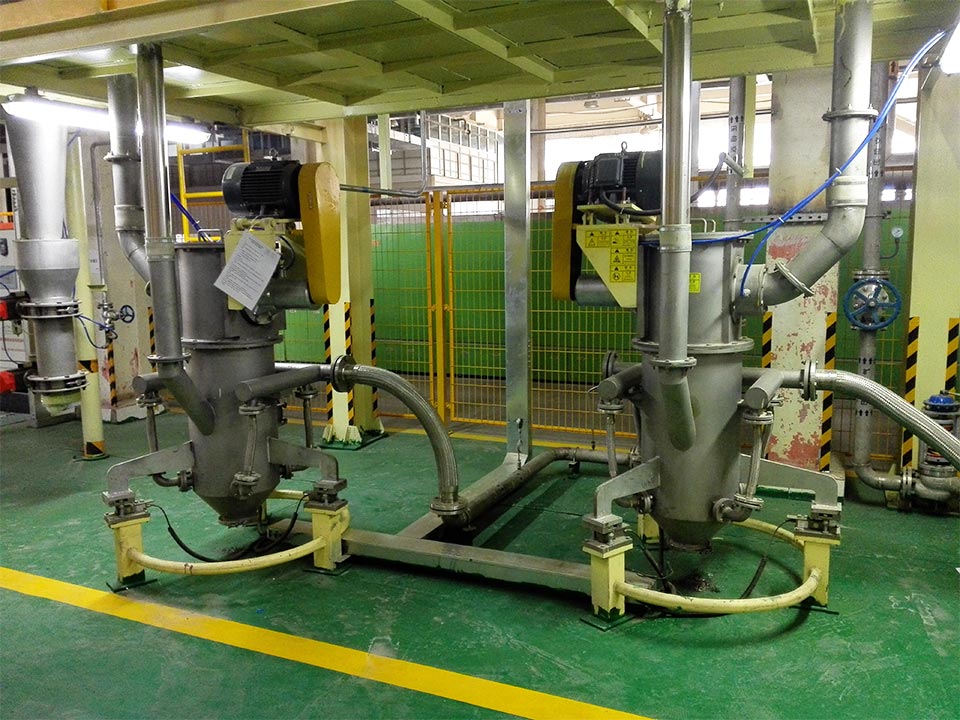Regarding the safety issues when using the jet mill
The jet mill uses high-speed airflow to carry animal materials, so that the material particles collide and shear each other to achieve the purpose of ultra-fine pulverization. Because of its excellent pulverizing effect, it is favored by powder manufacturers in various industries. The typical materials of the jet mill are: super hard diamond, silicon carbide, metal powder, etc., high purity requirements: ceramic pigments, medicine, biochemical, etc., low temperature requirements: medicine, PVC. By changing the ordinary air in the air source to inert gases such as nitrogen and carbon dioxide, the machine can be used as an inert gas protection device, suitable for the crushing and classification of inflammable, explosive, and oxidizable materials.

The safety issues of ultrafine powder processing with jet mills include respiratory pneumoconiosis and dust explosion. The particle size of the dust processed by the jet mill is basically below 5μm, and the dust below 5μm is the most harmful to the human body. Therefore, the probability of the operator of the jet mill operator suffering from pneumoconiosis occupational disease will increase significantly.
In addition, after the dust is scattered in the air on a large scale to form a dust cloud, a dust explosion may occur. Because the dust particles that are not captured during the processing of the jet mill have a suitable particle size and distribution state: generally the particle size is less than 5μm, the dispersion stability in the air is good, and it is easy to reach the explosion limit. If there is enough combustion-supporting air around these particles and has its minimum ignition energy, then dust explosions are prone to occur. Moreover, the shock wave generated by the explosion of a local dust cloud causes a large amount of deposited dust to fly up and mix with the air, which may form a secondary explosion. Because dust explosion has the characteristics of large energy, serious damage, short burst time, etc., it is easy to cause incomplete combustion, thereby producing a large amount of carbon monoxide gas to poison people. Therefore, the consequences of dust explosions are extremely serious.
What points should be paid attention to in the daily maintenance of the jet mill?
1. During the production process, the bearing temperature rise of the jet mill must be checked frequently. When the temperature rise exceeds 50°C, the machine should be shut down for inspection to find out the cause and eliminate the fault.
2. When the jet mill is running, the transmission belt is easy to stretch, so attention should be paid to adjusting the belt’s proper tightness to ensure the working life of the belt.
3. The wearing parts should be checked frequently and replaced in time to ensure production quality and throughput.
4. The blades and bushings should be frequently checked for wear. After wear, the productivity will decrease and the particle size will become coarser. Replace it in time when it is found to be worn.
5. The main engine and graded flow bearings are all grease lubricated.
6. The grease replacement period for the bearings of the jet mill is 2000 hours, and the filling amount of the grease is 1/2 (upper measurement) or 3/4 (lower measurement) of the space in the bearing cavity. Do not fill with grease too much. Otherwise, the bearing temperature will be too high.
7. The grease change period of the screw feeder is 4000 hours, and ordinary calcium-based grease is added.
In fact, every kind of mechanical equipment has a certain degree of danger when in use, and the fluidized bed jet mill is the same. This requires us to master its use method, standard operation and scientific maintenance can minimize the risk of danger.
